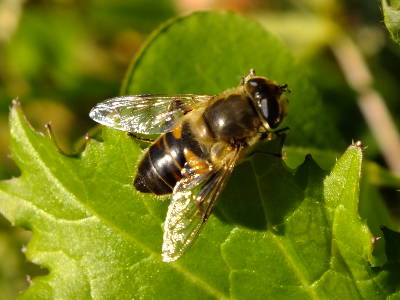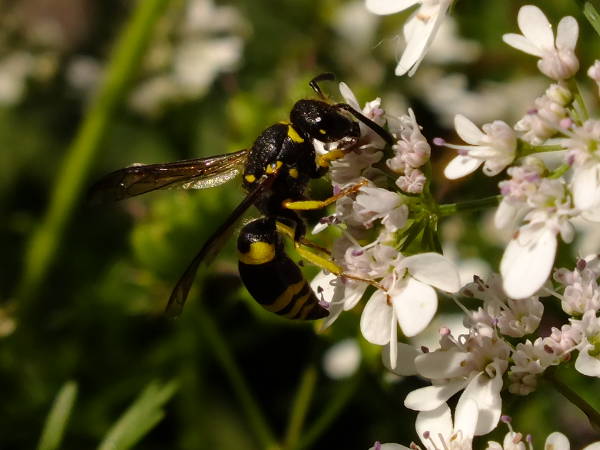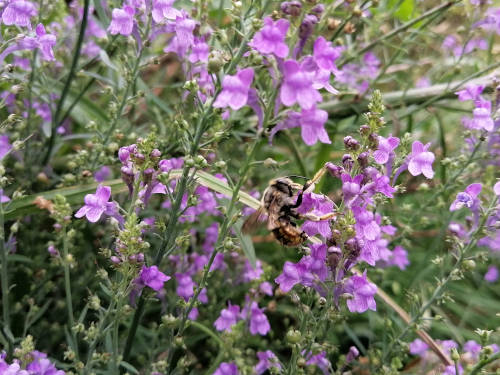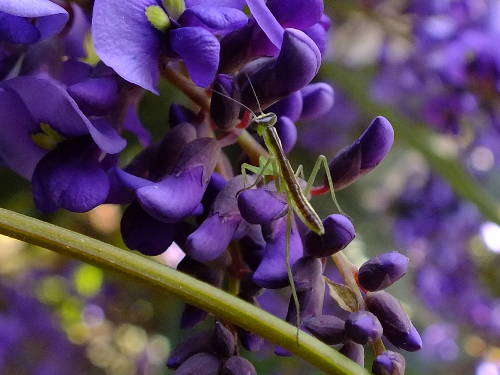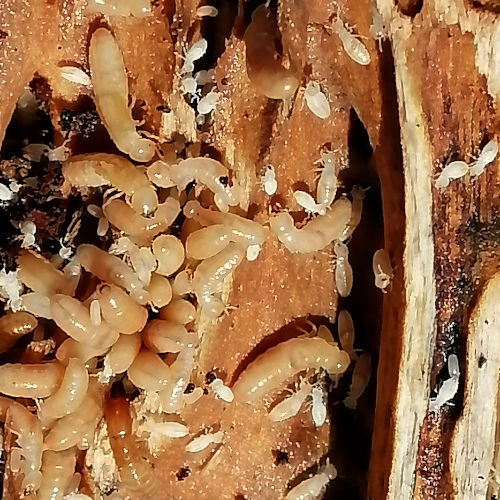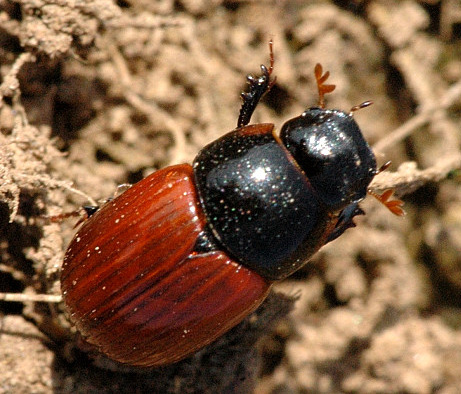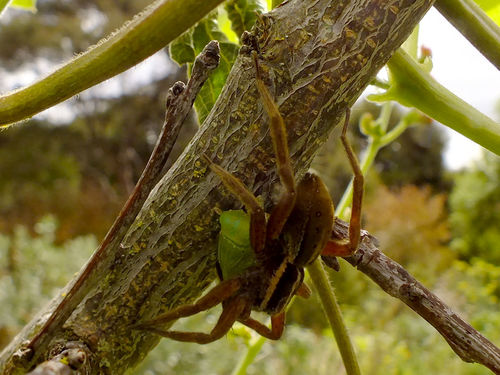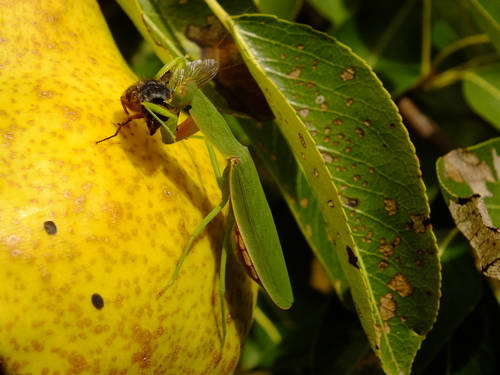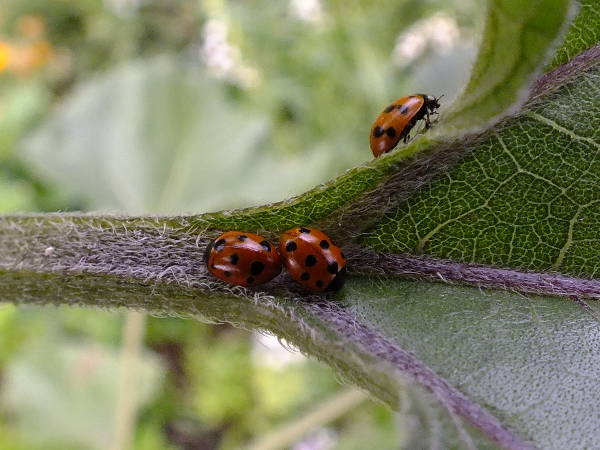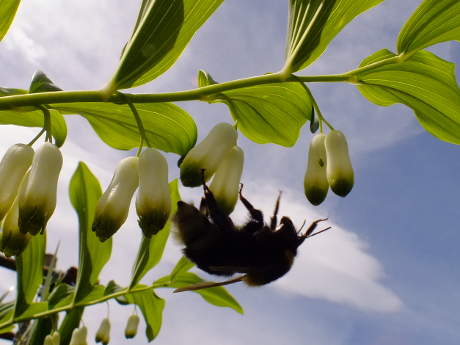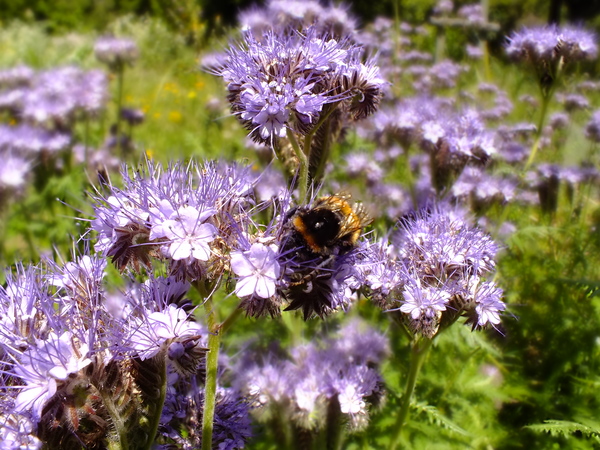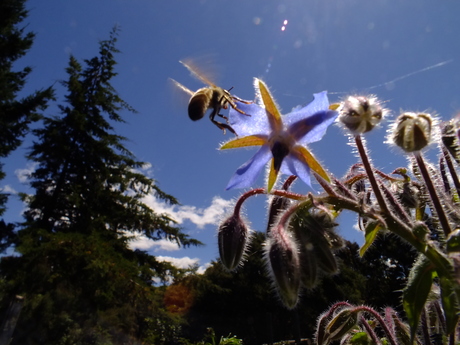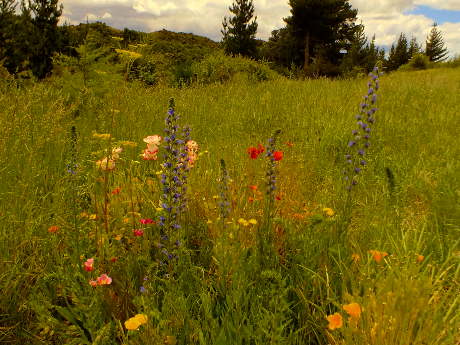Purple toadflax
Termites
Termites are a beneficial addition to the forest garden, helping to decompose dead wood and turn it into fertile soil.
Additionally, they aerate the soil which can help water and nutrients reach the plants and trees better, meaning trees grow faster.
There aren't many insects, or anything for that matter, that can decompose trees and almost any plant like termites can. Not only that, they also put the nutrients that were taken from that plant and put them back into the soil when they are decomposed.
Dung beetles
I first noticed them in kunekune pig manure in 2018. Reportedly first seen on Banks Peninsula in 2004.
Adult bugs are up to 8mm long and emerge to fly to new sites after spending their juvenile phase inside the manure.
The enemy of my enemy is my friend
Over the past few years we (and others out there) have been experiencing an explosion in the number of green shield / vegetable / stink bugs (Nezara viridula). We try and be accommodating to the various other creatures we share the world with, however these things are especially annoying with the damage they do to summer vegetables and fruit. In particular we find they enjoy tomatoes, beans and corn with lesser damage done to capsicums and fruit.
Predatory insects
Here a preying mantis devours a fly on a pear tree.
Ladybird
Phacelia
The mites
The good news is... while verroa mites have been found on bumblebees they are not able to reproduce on them however this does make the bumblebee a vector for spreading the mites.
Wild-flowers spreading
This approach of trying to passively replace grass using seed dispersing annual flowers did not work. Poppies returned for a few seasons before vanishing.
Bumblebee nest
There is a contented buzzing humming emanating from the wall and every now and then individuals can be seen bumbling in and out.
